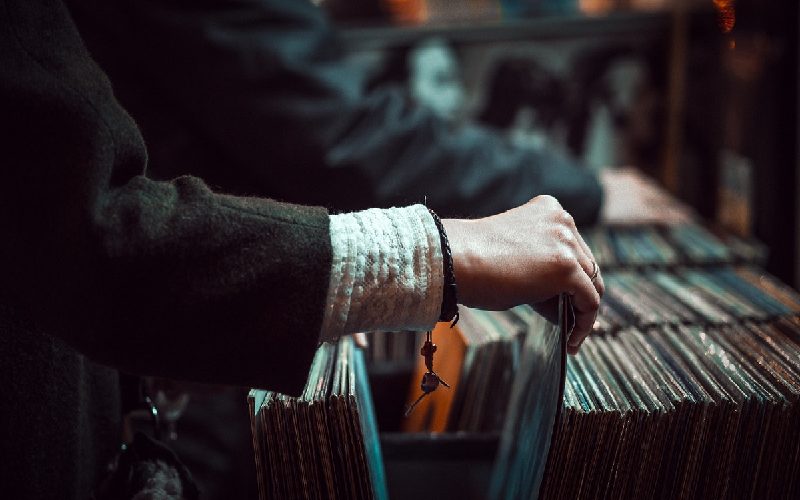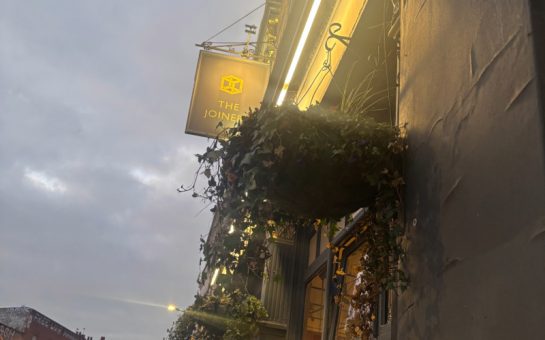Old-style vinyl records are continuing to experience something of a revival amongst music fans, as sales rose by more than 10% between 2020 and 2021.
According to the Official Charts Company, the number sold in the UK rose from 4.8 in 2020 to 5.3 million in 2021, an increase of 10.6% in album equivalent sales.
That is close to the 11.6% rise seen between 2019 and 2020 and represents the 14th consecutive year of growth since 2007, when a record low of 205,292 vinyls were sold.
The album equivalent unit is used to define the consumption of music that equals the purchase of one album, and can be applied across digital and physical formats, including streaming services like Spotify.
Moreover, whilst vinyl has jumped, CDs appear to be on the way out.
Sales of the shiny discs, which were once touted as indestructible, fell from 23.5m to just 14.4m between 2019 and 2021.
Kevin Jones, co-founder of Twickenham’s Eel Pie Records, explained that CD sales have now dropped off to the point where the shop isn’t stocking them any more.
Meanwhile, the public are streaming in ever growing numbers, accounting for 83.1% of the market in 2021, up 2.5% on the previous year.
The current growth in the streaming market is colossal, with 2021 seeing 132.4 million sales, compared to 104.2 million in 2019.
Gennaro Castaldo, Director of Communications at the British Phonographic Industry said: “In particular younger consumers are attracted to the idea of vinyl.
“We see continual growth and that growth feeds more demand.
“There’s a virtuous circle, as growth begets growth.
“Labels see there’s demand, they devote more resources to create more vinyl and to market it accordingly and to improve the quality.
“Then more artists want to release on those formats.
“At the same thing, we’ve seen this almost symbiotic relationship with streaming.
“One factor that counted against vinyl and CD and physical formats in the early days, when we were first transitioning to digital, was people were reluctant to pay for the download and the physical equivalent as well, so the two felt like they were in competition – you either had one or the other.
“As streaming came along from 2014 onwards, because it was an entirely different model where you were paying for a service rather than purchasing the product, suddenly it felt like the two could exist and actually be quite complementary.
“Most of us will stream for our general discovery and day to day needs, but if we come across an album or an artist that we particularly love, then quite a lot of people will make the effort to actually go out and buy it.
“Fans who love the artists and want to buy them on vinyl, CD and cassette will probably invest in all the formats.
“One of the defining things about our music industry at the moment is that there’s never been more choice.
“Whether it’s through streaming, downloads or across those physical formats, record companies invest in this and they enable it, as do retailers.
“It’s a bit of a golden scenario to be in and I can see it carrying on nicely along those lines.”
At the same time, there is a threat to the vinyl market.
Vinyl records are petroleum products and therefore not very sustainable or environmentally friendly.
To compound this, a lack of raw materials such as oil could make it harder for record companies and pressing plants to manufacture their products.
Cataldo said: “Obviously everything has a shelf life or finite use, whether it’s in 200 or 100 years time, at some point something comes to an end and you’ve got to reduce its carbon footprint.”
As for cassette tapes, there’s been a lot of speculation about them becoming the new vogue format, as 2021 saw their ninth year of consecutive growth, with the BPI reporting purchases of ‘190,000 tapes, up by around a fifth (20%) on the year and the highest amount since 2003, when 243,000 tapes were sold.’





Join the discussion